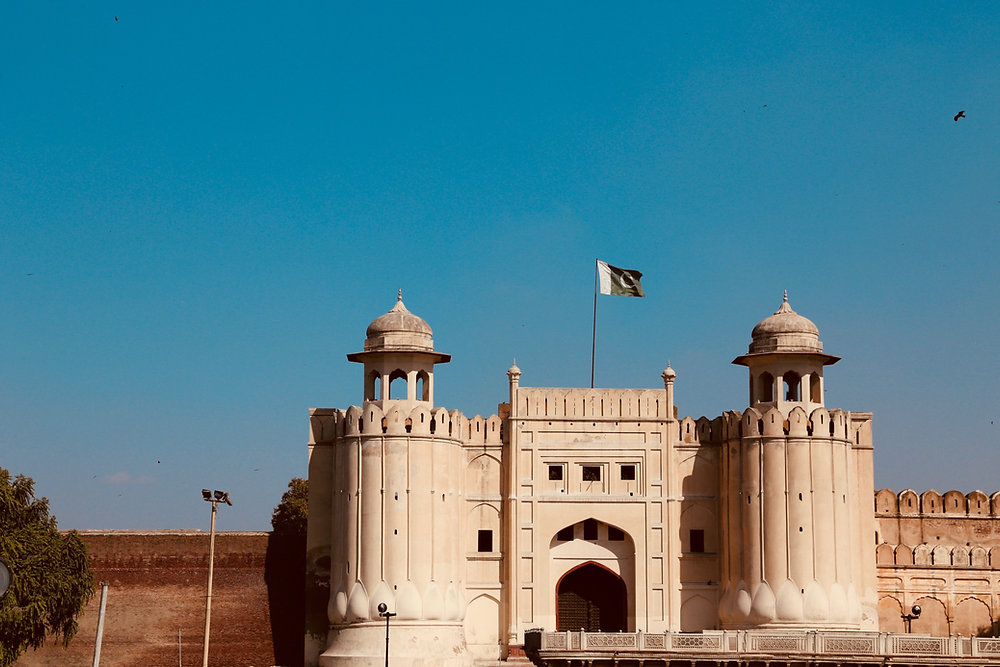Introduction .
Minar-e-Pakistan, an iconic national monument, stands proudly in the heart of Lahore, Pakistan, symbolizing the nation’s journey toward independence. This monumental structure was built to commemorate the Lahore Resolution of March 23, 1940, a landmark event in the subcontinent’s history, which laid the foundation for the creation of Pakistan. The site is not only a historical landmark but also a center of national pride and a major tourist attraction.
Location
Minar-e-Pakistan is located in Iqbal Park, one of Lahore’s largest urban parks, situated in the northwestern part of the city. The exact coordinates are approximately 31.5925° N, 74.3095° E. The park is bordered by the Ravi River on the north and the bustling streets of Lahore on other sides, making it easily accessible to both locals and tourists. It is located near other historical landmarks, including the Badshahi Mosque and Lahore Fort, enhancing its significance as part of a heritage-rich area.
Historical Background
The foundation of Minar-e-Pakistan was laid on March 23, 1960, exactly 20 years after the adoption of the Lahore Resolution. The monument was completed in 1968, under the supervision of Pakistani-Russian architect Nasreddin Murat-Khan, who envisioned a blend of Islamic and modern architectural styles. The construction was managed by civil engineer Abdul Rahman Khan Niazi, with funding largely contributed by the public through donations.
The Lahore Resolution, passed by the All-India Muslim League during its 27th annual session at this very site, demanded a separate homeland for Muslims in the Indian subcontinent. This resolution became the cornerstone of the struggle for Pakistan, leading to the country’s independence in 1947.
Architectural Details
Minar-e-Pakistan is an architectural masterpiece that seamlessly blends modern design with traditional Mughal aesthetics, embodying the cultural and historical richness of Pakistan.. The structure is 70 meters (approximately 230 feet) tall, including its base. Key features include:
- Foundation and Base: The base of the minar is constructed with robust stones and marbles, symbolizing strength and resilience. The base features inscriptions of the Lahore Resolution, excerpts from the Quran, sayings of Muhammad Ali Jinnah, and verses by Allama Iqbal in Urdu, Bengali, and English.
- Design: The minar has four platforms, each representing the different phases of Pakistan’s freedom movement. The gradual transition in materials from rough stones at the lower platforms to polished white marble at the top symbolizes the struggle to freedom.
- Structure: The tower has a spiral staircase of 324 steps leading to the top, where a viewing gallery offers a panoramic view of Lahore.
- Lighting: At night, the monument is illuminated with vibrant lights, adding to its grandeur and making it a stunning sight.
Symbolism
The design of Minar-e-Pakistan encapsulates the essence of the country’s struggle for independence, symbolizing the resilience, unity, and determination of the nation. Each element of its architecture narrates a story of the sacrifices and milestones achieved during the journey toward freedom:
- Foundation: The solid stone base represents the strength and perseverance of the freedom movement.
- Ascending Platforms: The four platforms symbolize the progressive stages of the independence struggle, transitioning from adversity to triumph.
- Tower’s Height: The soaring structure signifies the aspirations and vision of a free and prosperous Pakistan.
- White Marble: The use of polished white marble at the top reflects the purity and sanctity of the nation’s ideals.
- Base: The robust stone foundation symbolizes the hardships faced during the independence movement.
- Ascending Platforms: Each platform signifies a progressive stage in the journey toward freedom.
- Top of the Tower: The white marble and the height represent the purity of purpose and the aspirations of the people of Pakistan.
Significance
Minar-e-Pakistan is more than just a historical structure; it stands as a profound national symbol of unity, resilience, and the countless sacrifices made in the pursuit of freedom. It serves as a beacon of hope and a reminder of the collective determination that led to the creation of Pakistan, inspiring future generations to uphold the ideals of perseverance, justice, and solidarity.. It serves as a reminder of the vision and determination that led to the creation of Pakistan. It is also a hub for national celebrations, public gatherings, and events such as Pakistan Day, Independence Day, and cultural festivals.
Tourism and Accessibility
Iqbal Park, where the monument is located, is a beautifully landscaped area featuring gardens, fountains, and walkways, providing a serene environment for visitors. Tourists often combine a visit to Minar-e-Pakistan with other nearby attractions such as the Badshahi Mosque, Lahore Fort, and Shalimar Gardens.
The site is easily accessible via public transportation, taxis, and private vehicles. Parking facilities and guides are available to assist visitors in exploring the monument and its surroundings.
Conclusion
Minar-e-Pakistan stands as an enduring symbol of Pakistan’s identity, history, and aspirations. Its strategic location, rich history, and stunning architecture make it a must-visit destination for anyone exploring Lahore. Whether viewed as a historical landmark, an architectural wonder, or a source of national pride, Minar-e-Pakistan continues to inspire millions, reminding them of the sacrifices and unity that shaped their homeland.





 Uncategorized7 years ago
Uncategorized7 years ago
 Uncategorized7 years ago
Uncategorized7 years ago
 Uncategorized7 years ago
Uncategorized7 years ago
 Uncategorized7 years ago
Uncategorized7 years ago
 Uncategorized7 years ago
Uncategorized7 years ago
 Uncategorized7 years ago
Uncategorized7 years ago
 Peshawar7 years ago
Peshawar7 years ago
 Uncategorized7 years ago
Uncategorized7 years ago



